calsfoundation@cals.org
Murfreesboro (Pike County)
County Seat
| Latitude and Longitude: | 34º03’34″N 093º41’23″W |
| Elevation: | 367 feet |
| Area: | 3.66 square miles (2020 Census) |
| Population: | 1,495 (2020 Census) |
| Incorporation Date: | April 19, 1878 |
Historical Population as per the U.S. Census:
|
1810 |
1820 |
1830 |
1840 |
1850 |
1860 |
1870 |
1880 |
1890 |
1900 |
|
– |
– |
– |
– |
– |
– |
– |
84 |
159 |
200 |
|
1910 |
1920 |
1930 |
1940 |
1950 |
1960 |
1970 |
1980 |
1990 |
2000 |
|
516 |
730 |
733 |
835 |
1,079 |
1,096 |
1,350 |
1,883 |
1,542 |
1,764 |
|
2010 |
2020 |
|
|
|
|
|
|
|
|
|
1,641 |
1,495 |
|
Murfreesboro is the county seat of Pike County, which lies in the southwest corner of Arkansas and is an area of tremendous geological diversity, with regard to both soil and minerals. In addition to mining for diamonds and mining for quartz, other gems and minerals such as amethyst, garnet, jasper, calcite, barite, lamproite, and banded agate can also be found in the area.
About 100 million years ago (the Mid-Cretaceous Period), the Gulf of Mexico coastline ran across the middle of Pike County. Murfreesboro, being in the southwest corner of the county, was under water. A volcanic explosion spewed ash and molten rock toward the sky and created an eighty-acre crater. The turbulent rotations of the earth caused diamonds to work their way to the surface from deep underground. This area is now known as the Crater of Diamonds State Park, located two miles southeast of Murfreesboro.
Pre-European Exploration
The first known inhabitants of the area were Native Americans. Some of the tribes were the Caddo and the Quapaw, who left some evidence of their culture in the mounds along the Little Missouri River, which runs along the west and south sides of Murfreesboro. The first white men to be seen by the Indians were European explorers—members of Hernando de Soto’s party in October 1541, and six members of René-Robert Cavelier, Sieur de La Salle’s expedition in 1687. Markers and a statue commemorate a violent clash the de Soto expedition had with the Tula Indians (a Caddoan group) in Caddo Gap (Montgomery County), about twenty-five miles north of Murfreesboro.
Early Statehood through the Gilded Age
After Pike County was created in November 1833, Elijah Kelly and Henry Brewer served as commissioners to select a county seat. The only man living in the vicinity was Asa Thompson. He opened a store and thus became the first merchant in the county. He later managed to secure a post office, and the area was given the name Zebulon. This site was chosen as the county seat. A log structure was built to serve as the courthouse, with a small building for a clerk’s office. Zebulon was a wilderness with few inhabitants. In 1836, the name was changed to Murfreesborough (later Murfreesboro). The name supposedly came from settlers who named it after their Tennessee hometown.
Murfreesboro is low-lying, rich river bottom land. The Little Missouri River is about two miles from Murfreesboro on the west side and about the same distance on the south side. When settlers moved in with slaves, they settled in this area of the county because of the rich land, which grew good crops of cotton, along with corn and other crops. Agriculture was the major source of income for the population. In 1820, no slaves are shown in the Pike County census. In 1840, 109 slaves are listed. By 1860, 227 slaves are counted along with 3,798 whites. The majority of slaves were located in Murfreesboro, Delight, and Antoine, where the majority of the area’s African Americans live today.
In 1855, the original courthouse and clerk’s buildings burned, and all records were destroyed. In 1856, the county court ordered another courthouse to be built. It burned down in 1895, and all records were destroyed again. A brick building constructed in 1897 stood until the county built a new one in 1933, which still stands in the middle of the courthouse square.
Murfreesboro escaped the major battles of the Civil War, although it served as a winter quarters for the Confederate army. In September 1863, the Federals occupied Little Rock (Pulaski County). Confederate soldiers were working on a plan to take back the state and encamped for the winter at Murfreesboro, Washington (Hempstead County), and Camden (Ouachita County). Inactivity at the camps caused some desertion, so in order to keep the remaining men active, they were encouraged to have horse races and mock battles.
At the settlement of Royston, which sat on the banks of the Little Missouri River two and a half miles northwest of Murfreesboro, a grist mill had been built, and the water power was very suitable. People came from miles around to have their corn ground. A woolen mill was also built, which wove gray denim-like cloth for Confederate uniforms. Woolen blankets were woven and sold to the Confederate army. People could also buy cotton yarn to make their own clothing. A new mill was built around 1875, and Royston became a thriving community with about 200 residents. The site fell into disrepair and is now a campground. All that remains of the old mill is a wooden base stretching across the river, which can be seen during low water.
On September 6, 1885, two white men, brothers Henry and Sylvester Polk, were burned alive in the city jail following two earlier failed attempts to lynch them. The following month, a white man named Sylvester Churchill was killed by a mob in Murfreesboro in a similar manner.
Early Twentieth Century through the Modern Era
In 1906, John Wesley Huddleston found the first diamonds near Murfreesboro. People poured into town and opened new businesses. Murfreesboro became a boom town. The diamond mine was operated several years before the unearthing of the largest diamond ever found in North America; mine employee Wesley Oley Basham found the Uncle Sam diamond (40.23 carats) in 1924. The diamond is named for Basham, whom everyone called Uncle Sam. Over 75,000 diamonds have been unearthed since the first ones were discovered, though diamonds have never been found in sufficient quality or number to support a steady mining industry.
In early 1900, Martin White Greeson began to work toward getting the Little Missouri River dammed to halt flooding. Heavy rains at the upper end of the river in the Ouachita Mountains often came rushing down through the mountain gaps, flooding the low-lying fields around Murfreesboro and below; many times, farmers’ crops were destroyed, and by the time the river bottom dried out, it was too late to plant again. Finally in 1941, Congress authorized $3 million for the construction of Narrows Dam. The dam was finished by 1951, creating Lake Greeson, which has become a popular tourist destination.
In 1909, railroad tracks were being laid toward Murfreesboro to connect to the Memphis, Paris and Gulf railroad at Nashville (Howard County). It was decided to run the rails on to Hot Springs (Garland County) to enable passengers to travel between Texarkana (Miller County) and Hot Springs. After the route was decided, plans were announced on August 9, and the name was changed to Memphis, Dallas and Gulf Railroad (MD&G). The track-laying began in Murfreesboro on May 7, 1913. The first train ride from Hot Springs to Texarkana was made on March 18, 1915. However, the MD&G began to have financial trouble even before World War I and, after the war, never had a chance to recover. The forests had been cut over, which reduced the amount of timber shipped out of the area. On August 15, 1922, the railroad was sold at public auction in Nashville (Howard County). Former stockholders bought it, and it was reorganized as the Graysonia, Nashville and Ashdown Railroad.
By 1926, all rails running north from Murfreesboro were taken up. The Murfreesboro-to-Nashville route continued, hauling pulpwood, lumber, and freight to Nashville until 1952. One of this train’s most memorable runs was in the spring of 1944. About 300 German prisoners were taken to a prisoner-of-war camp on the northwest edge of Murfreesboro. The prisoners were moved out by May 1946. The area is now a ball park.
From 1929 through 1965, Alice Preston was the only teacher at the only school teaching African-American students in Mufreesboro until she helped to facilitate integration in that area.
During the Depression, the Civilian Conservation Corps (CCC) was active in the area, and many men from Murfreesboro assisted in CCC projects, such as the Albert Pike Campground in Montgomery County and Shady Lake in Polk County. With Murfreesboro being a rural area, the majority of people at the time raised “Relief Gardens.” Wild berries and grapes grew abundantly in the countryside, where wild game also roamed. When the men went off to fight during World War II, many women moved themselves and their children to Texarkana (Miller County) or other nearby cities to look for employment, primarily in ordnance plants that were being built in southern Arkansas.
The leading industry in Murfreesboro was the Anthony Lumber Company. John William Anthony moved his family to Murfreesboro from Cale (Nevada County) in 1928 and started a lumber mill, which became one of the leading sawmills in the South. It provided employment for many men in and around the town for many years. Anthony retired in the 1940s, leaving the mill to be managed by his sons.
Murfreesboro does not have any major industry at present, though it has a few smaller ones, in addition to chicken houses, hay fields, and cattle farms scattered around the town. R. D. Plant Contracting Co., Inc., was established in 1972. Its main product is asphalt, but it also sells rocks and gravel. Tyson Foods, Inc., operates a chicken hatchery on the west side of town. Diamond City Trailer Manufacturing began manufacturing boat trailers in Murfreesboro in 1993. Pike County Hospital has served the city and surrounding communities since 1958 and is the only hospital in the county. Many citizens commute to Nashville (Howard County) as well as other nearby towns.
Murfreesboro was chosen to host the unveiling of the Arkansas quarter on October 28, 2003. The quarter, which features a diamond as part of its design, was the twenty-fifth coin released. On December 5, 2023, the community’s only grocery store burned, leaving Murfreesboro residents having to travel elsewhere for groceries.
Education
Until 1965, Murfreesboro schools were segregated. Murfreesboro had a twelve-year school for the white children and a school for the African-American children that covered eight grades. They were on opposite sides of town. The African-American high school students were bussed to a school near Nashville (Howard County). Most of the town’s children knew each other, so when the time came, the schools were integrated without incident. There were fewer black students, so all children began going to the white school, which was larger. The school system currently includes kindergarten through twelfth grade. The town has a Head Start preschool and a church daycare.
Attractions
The areas around Narrows Dam and Lake Greeson have continued to grow with campgrounds, boat docks, and motels. The area is known for good deer hunting and fishing. Turkeys are becoming numerous, and fish hatcheries are located just below the dam. The Arkansas Game and Fish Commission stocks the area with trout.
The upper waters of the Little Missouri River are excellent for experienced canoeists. A 4.4-mile stretch has been designated a wild river, which includes the Class IV Winding Stair Rapids.
Crater of Diamonds State Park is the world’s only diamond-bearing site open to the public. For a fee, visitors may search the thirty-seven-and-one-half-acre plowed field and keep what they find. Along with diamonds, visitors may find garnet, amethyst, jasper, banded agate, quartz, or other stones and minerals. The park has added an aquatic playground, a museum of discovery where visitors can receive in-depth instructions on how to search for diamonds, a diamond-hunter’s hall of fame, and other exhibitions. New is the Diamond Discovery Center, which exhibits the history of diamonds, facts about geology, examples of rocks to look for while at the crater, and numerous other points of interest.
The discovery of diamonds is celebrated every June with the Diamond Festival. On separate dates, the Crater of Diamonds State Park sponsors a gem and mineral show and John Huddleston Day, honoring the man who discovered the first diamonds in the area.
Diamond John’s Riverside Retreat opened in June 2006 on the banks of the Little Missouri River about one and a half miles from the Crater of Diamonds. It has a two-story log bed and breakfast and tepees and cabins available to rent. There is a small petting zoo, hot tubs, paddle boats, kayaks, a children’s pool, and areas for playing sports.
For additional information:
Crater of Diamonds State Park. http://www.craterofdiamondsstatepark.com/ (accessed July 19, 2023).
“Crater of Diamonds State Park.” Rural Arkansas (August 2005): 15–18.
Early History of Pike County, Arkansas: The First Hundred Years. Murfreesboro, AR: Pike County Archives and History Society, 1989.
Pike County Arkansas: A Look at the Past. Murfreesboro, AR: Pike County Archives and History Society, 1995.
Pike County Archives and History Society. http://www.pcahs.org/ (accessed July 19, 2023).
Doris Russell Foshee
Murfreesboro, Arkansas
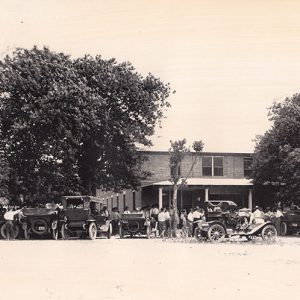 Conway Hotel
Conway Hotel  Crater of Diamonds
Crater of Diamonds 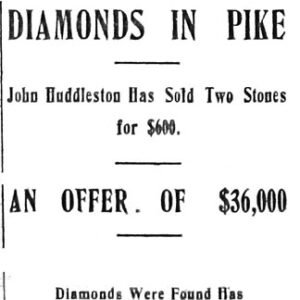 Diamond Discovery Announcement
Diamond Discovery Announcement 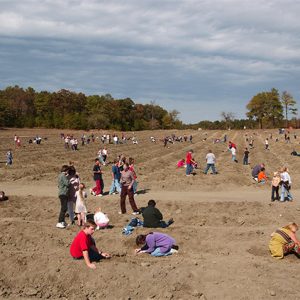 Diamond Field
Diamond Field 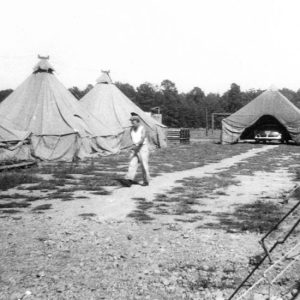 German POW Camp
German POW Camp  Murfreesboro Colored School
Murfreesboro Colored School 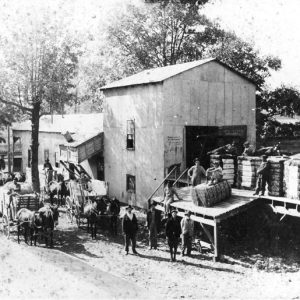 Murfreesboro Cotton Warehouse
Murfreesboro Cotton Warehouse  Murfreesboro Postcard
Murfreesboro Postcard  Pike County Courthouse
Pike County Courthouse 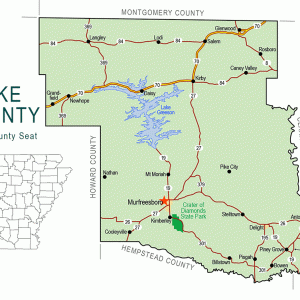 Pike County Map
Pike County Map 




Comments
No comments on this entry yet.